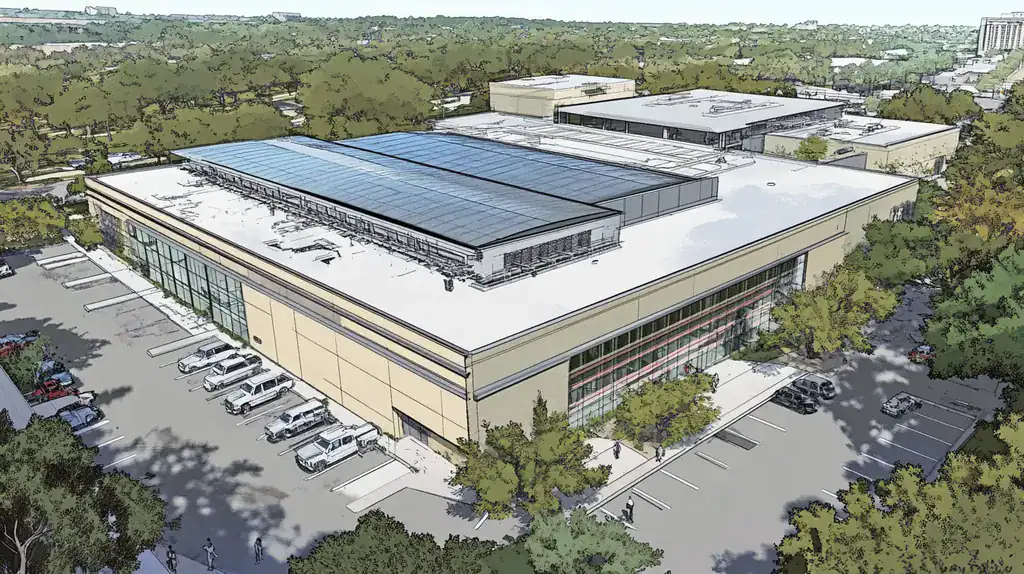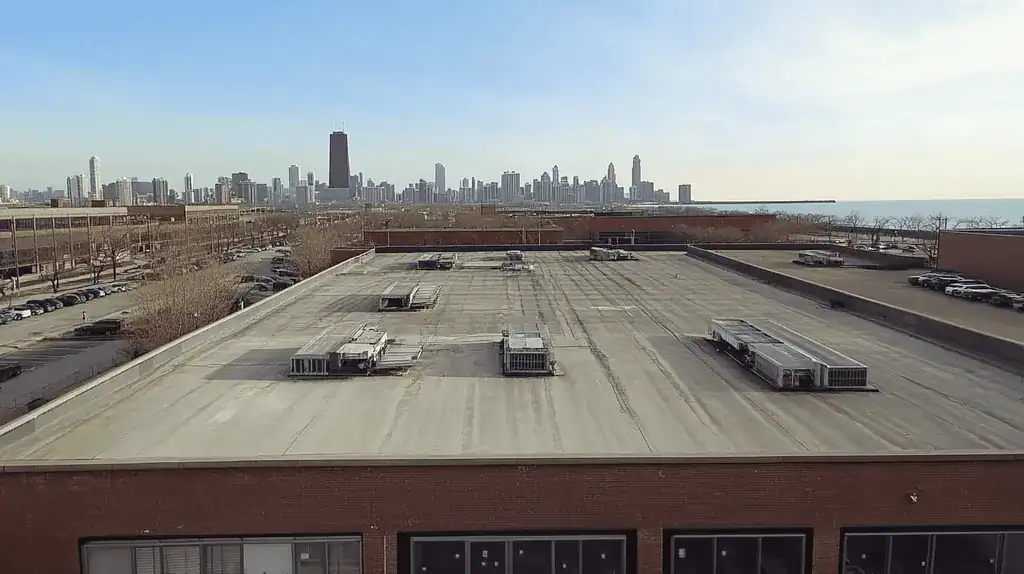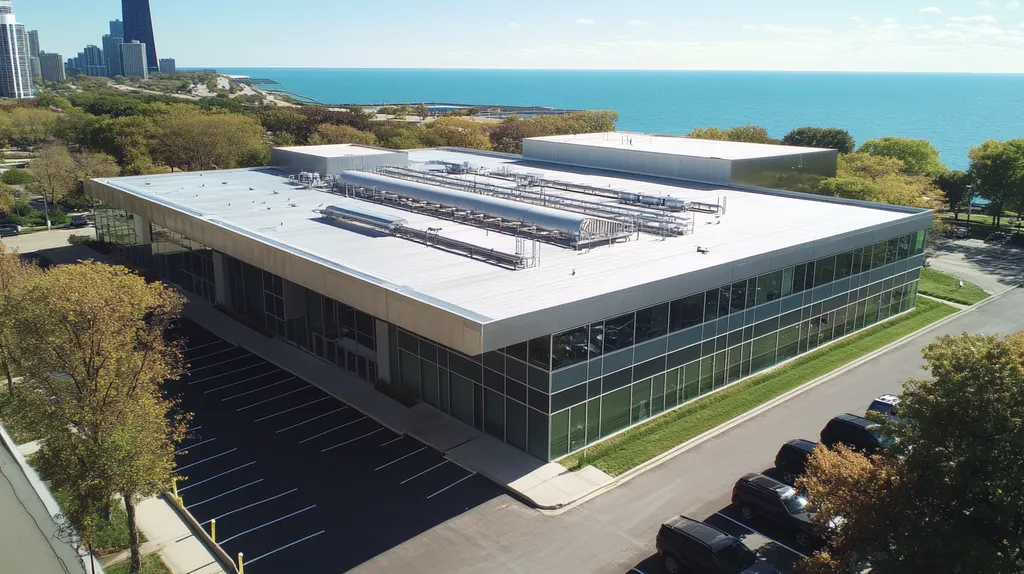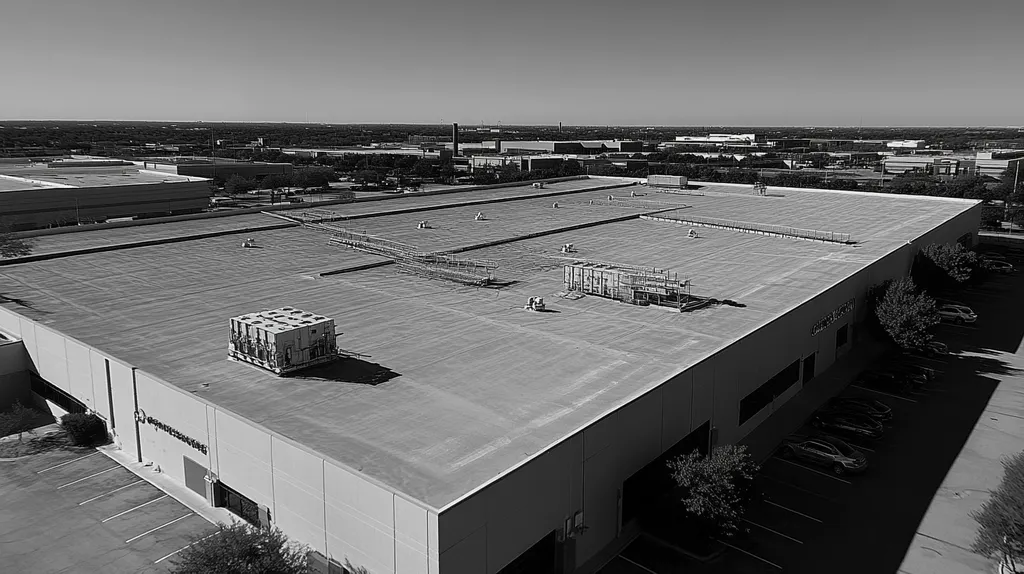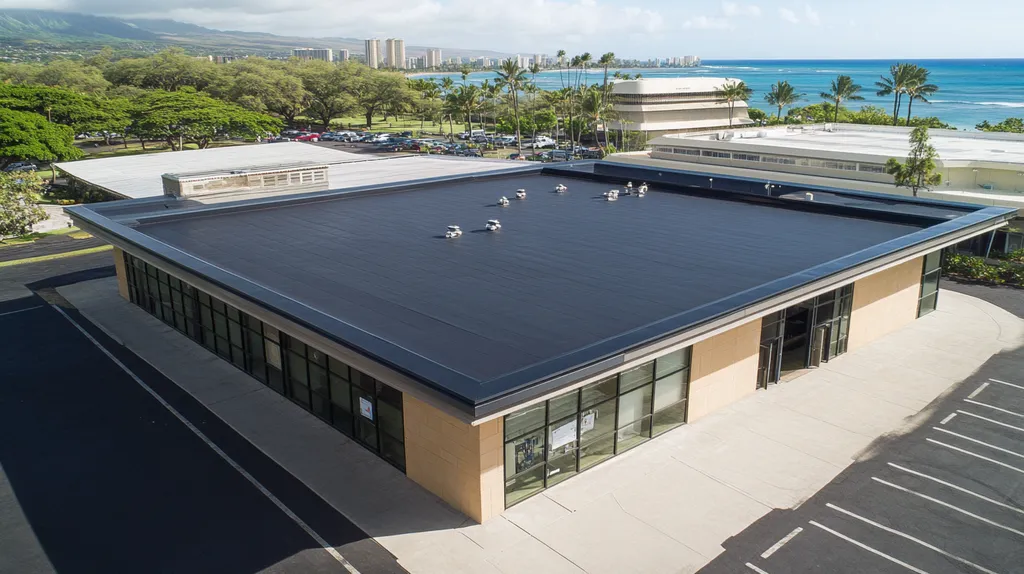Every year, commercial building fires cause over $2.6 billion in property damage, with inadequate roof fire ratings contributing to nearly 30% of catastrophic losses. For facility managers, understanding and implementing proper fire ratings isn’t just about code compliance – it’s about preventing devastating financial impacts and protecting human lives.
This comprehensive guide examines critical factors in commercial roof fire safety, from performance testing and material selection to long-term maintenance requirements.
Through actionable checklists and clear protocols, facility managers will learn to evaluate, upgrade, and maintain fire-rated roofing systems that meet both safety standards and budget constraints.
SECTION 1: PERFORMANCE FACTORS
Fire safety for commercial roofs has never been more critical, especially as the costs from fire-related damage soar. The National Fire Protection Association reports that property losses from commercial building fires exceeded $2.6 billion in recent years. By grasping fire ratings, facility managers can enhance safety and minimize financial exposure. This section will spotlight essential fire resistance ratings, how roofing materials influence fire spread, and provide a handy verification checklist for fire performance testing.
Key Fire Resistance Ratings for Commercial Roofs
Grasping fire resistance ratings is essential for ensuring the safety of commercial roofs. These ratings fall into three classes: A, B, and C. Class A represents the highest level of fire resistance, able to endure severe fire exposure, making it especially suitable for high-risk facilities.
Conversely, Class B and C roofs are more vulnerable to fire spread. Selecting the appropriate classification is crucial, as each facility faces unique fire risks based on location and construction materials. Opting for Class A materials could even qualify facilities for lower insurance premiums.
Additionally, fire tests by Certified Laboratories deliver real-world data on material performance in specified conditions. Facility managers must confirm their roofing systems comply with these standards throughout installation. When unsure, consulting a roofing expert can clarify which rating best fits the facility’s needs.
Key Action Items
Impact of Roofing Materials on Fire Spread
The choice of roofing materials is a critical factor in fire safety. Materials like modified bitumen or PVC offer superior fire resistance compared to standard asphalt shingles. Recognizing these differences can significantly influence the outcome during a fire incident.
Using materials with high flammability ratings can lead to swift fire spread, endangering not only the facility but also neighboring buildings. This risk underscores the need for selecting roofing systems that are specifically engineered to reduce fire hazards.
Furthermore, the slope of the roof can affect how quickly a fire spreads. Steeper roofs may allow flames to move more rapidly compared to flatter designs, which can sometimes hinder fire propagation. Conducting regular inspections of roofing materials can further minimize these risks.
Key Action Items
Verification Checklist for Fire Performance Testing
A comprehensive verification checklist is essential for facility managers to confirm that roofs meet fire performance standards. The checklist should include reviewing certifications from recognized testing laboratories, ensuring compliance with local building codes, and confirming that material classifications are suitable for the intended roof use.
Having documentation of fire performance testing results readily accessible is vital. This helps ensure efficient processing of insurance claims in case of a fire. Facility managers should create a routine for maintaining and obtaining updated test results.
Finally, collaborating with licensed roofing professionals knowledgeable about fire ratings is critical. Their expertise ensures the roofing system’s integrity under fire conditions, aiding in the prevention of potential disasters.
Key Action Items
SECTION 2: FINANCIAL CONSIDERATIONS
Choosing fire-rated roofing systems is not only about meeting regulations; it’s a strategic financial decision that can safeguard commercial properties. With the risk of catastrophic losses and expensive repairs from fire incidents, the right roofing choice is crucial. Poorly made selections can create significant financial burdens, impacting both installation costs and ongoing maintenance. This section explores the financial considerations associated with fire-rated roofing systems, offering actionable insights for facility managers.
Cost Comparison of Fire-Rated Roofing Systems
When selecting roofing options, understanding the cost differences between fire-rated and non-fire-rated systems is essential. Fire-rated materials, including modified bitumen and metal roofs, typically have a higher initial price point compared to traditional materials. However, their enhanced durability can significantly lower potential losses in the event of a fire.
For instance, installing a fire-rated roof might come with a 10-20% price increase, but it’s important to consider that this can lead to lower fire insurance premiums, transforming this upfront cost into a long-term investment. By recognizing these cost dynamics, property owners can make more informed decisions regarding their roofing choices.
Facility managers are encouraged to collect multiple quotes and conduct comprehensive comparisons. Neglecting fire safety in roofing design could result in having to replace large sections of roofing, ramping up long-term costs. Investing in a fire-rated system upfront can provide stability and financial security over time.
Key Action Items
Budgeting for Fire-Resistant Roof Installations
When budgeting for fire-resistant roof installations, it is vital to look beyond just the immediate expenses. Facility managers need to incorporate the long-term benefits that come with investing in fire safety. Prioritizing quality materials can mitigate future costs associated with property damage.
It’s prudent for property owners to set aside a contingency fund for unexpected expenses. During the installation process, additional costs may emerge, particularly if structural changes are necessary to support fire-rated systems. Thoughtful budgeting ensures compliance with safety standards without straining other financial allocations.
In states like California, where heightened fire safety regulations exist, property owners must amend their budgets to accommodate stricter requirements. By adopting a proactive approach to budgeting for fire-resistant roofs, organizations can reduce the risk of unplanned financial strains resulting from fire incidents.
Key Action Items
Long-Term Savings Through Fire-Rated Roofing
Investing in fire-rated roofing systems can unlock significant long-term savings for commercial properties. These robust systems often require less maintenance, resulting in decreased repair frequency and fewer interruptions to normal operations.
Additionally, fire-rated roofs may qualify for lower insurance premiums, impacting the financial equation positively. Facilities that incorporate these roofing types can experience a dual benefit—enhanced safety and narrowed expenses. The initial investment can be offset by these savings over the years.
Moreover, research indicates that properties featuring fire-rated roofs often enjoy higher occupancy rates. Buildings viewed as secure attract more tenants, which translates to increased revenue. Ultimately, opting for fire-rated roofing not only protects assets but also fosters a healthier financial outlook.
Key Action Items
SECTION 3: COMPLIANCE REQUIREMENTS
Compliance with fire safety regulations is not just a legal obligation; it’s a crucial aspect of safeguarding both property and lives. Failure to adhere can lead not only to substantial financial losses but also pose dire safety risks to occupants. Facility managers must stay informed about these compliance requirements to mitigate risks effectively. This section outlines key mandates, certification standards, and essential documentation practices for fire safety compliance.
Understanding Local Fire Code Mandates for Roofs
Local fire codes specify critical safety measures that commercial roofing systems must incorporate. These mandates can vary widely by jurisdiction but generally include requirements for fire-resistant materials and construction techniques. Non-compliance can expose property owners to legal liability and increase insurance costs.
Facility managers should proactively engage with local building departments to verify that their roofs meet all fire safety standards. As fire codes frequently change, yesterday’s compliance may not meet today’s requirements. Staying informed and compliant is essential for ensuring safety and legality.
Working with a licensed roofing contractor who is knowledgeable about local codes can simplify the compliance process. These experts can help navigate the complexities of regulations, ensuring all roofing materials and installations are current with the latest mandates.
Key Action Items
Certification Standards: UL 790 and ASTM E108 Explained
Certification standards such as UL 790 and ASTM E108 establish important benchmarks for evaluating roofing materials’ fire resistance. UL 790 assesses a material’s ability to prevent flames from spreading, while ASTM E108 checks the material’s performance against burning brands.
Understanding these ratings enables facility managers to select suitable materials for their roofs. For instance, a roofing assembly rated Class A can withstand severe fire exposure, making it ideal for structures in high-risk areas.
It’s key to remember that not all products are certified the same way. Facility managers should always request and thoroughly review documentation that confirms compliance with these standards before making purchasing decisions.
Key Action Items
Documentation and Inspection Protocols for Compliance
Effective facility management hinges on maintaining thorough documentation related to fire safety regulations. This documentation should include a detailed record of all roofing materials, warranties, and inspection reports, ensuring readiness for inspections and serving as valuable evidence for claims.
Regular inspections of roofing systems should be conducted per local regulations, with findings documented to track any deficiencies and outline corrective actions. This proactive approach emphasizes a commitment to safety and compliance.
Additionally, compiling a dedicated compliance log can improve communication with regulatory agencies. This log should encompass inspection dates, findings, and corrective actions taken to ensure ongoing safety and adherence.
Key Action Items
SECTION 4: RISK MANAGEMENT
In the realm of commercial roofing, fire hazards represent a significant risk that facility managers cannot afford to ignore. According to the National Fire Protection Association, nearly 80% of all building fire incidents result from human activities. This statistic underscores the importance of proactive measures in fire safety. By identifying fire hazards, assessing risks based on building occupancy, and implementing effective preventative measures, facility managers can ensure that roofs not only meet safety regulations but also safeguard lives and property.
Identifying Fire Hazards in Commercial Roofing
Recognizing specific fire hazards linked to commercial roofing is vital for effective risk management. Common sources of ignition include improper storage of flammable materials and faulty electrical systems. Facility managers should regularly assess roofing materials, such as membranes and insulation, to verify their fire ratings.
Using fire-retardant materials can significantly improve a roof’s resistance to flames. It’s also crucial to evaluate the surrounding environment; properties near industrial areas may face higher risks from external fire sources. Training staff on safe storage and handling practices can greatly reduce these risks.
Moreover, consulting with insurance providers about unique fire hazards associated with roofing offers valuable insights. By creating an inventory of potential fire hazards, managers can implement effective safety protocols and address vulnerabilities proactively. Ignoring these risks can lead to catastrophic outcomes.
Key Action Items
Assessing Building Occupancy and Fire Exposure Risks
Understanding the types of building occupancy is crucial for effectively assessing fire exposure risks. Different commercial properties have varying activities, each presenting unique fire risks; for example, a warehouse storing flammable substances carries more risk than an office building. Facility managers should familiarize themselves with the National Fire Protection Association’s (NFPA) occupancy classifications to devise tailored fire safety strategies.
Conducting thorough risk assessments helps unveil critical vulnerabilities. Identify high-traffic areas where people gather and consider the specific activities conducted there. Facilities with assembly occupancies, like auditoriums, require more rigorous fire protection than standard offices.
Geographical factors also play a significant role; structures in high-fire-risk areas, such as those prone to wildfires, require special materials and prevention strategies, such as metal roofs that can shield against embers. Utilizing these insights enables facility managers to enhance safety while ensuring compliance with regulations.
Key Action Items
Implementing Preventative Measures and Monitoring Systems
Preventative measures and effective monitoring systems are essential for managing roofing fire risks. Installing fire alarms and sprinkler systems on roofs can provide vital early warnings and automatic suppression in case of fire incidents. Routine inspections of these systems are critical to ensure their functionality during emergencies.
Moreover, conducting regular maintenance and establishing clear emergency protocols can significantly enhance safety. Training employees in fire response practices and conducting drills better prepares them for actual incidents. Hence, ensuring clear access for emergency responders is a vital facet of a comprehensive safety strategy.
Incorporating advanced technology, such as heat detection sensors, adds an additional layer of protection by alerting facility managers to rising temperatures before a potential fire escalates. Comprehensive fire risk assessments should examine existing preventative measures to identify gaps.
Key Action Items
SECTION 5: OPERATIONAL PROCEDURES
Fire safety in commercial roofing isn’t merely an obligation—it’s essential for protecting lives and property. With nearly 20,000 commercial building fires occurring annually, many linked to roofing materials, it’s critical to establish effective operational procedures. This section covers the vital components of routine inspections, maintenance practices, and emergency response planning to keep fire-rated roofs compliant and safe.
Routine Inspection Criteria for Fire-Rated Roof Systems
Regular inspections of fire-rated roof systems are essential to maintain safety and compliance. Ideally, these inspections should take place at least twice a year and after major weather events like storms or high winds. Inspectors should focus on identifying signs of wear, damage, or any debris that could compromise fire resistance.
Key inspection criteria include verifying seams, flashings, and membrane integrity. Any cracks or holes should prompt immediate repairs as they may allow moisture and fire hazards to penetrate. Fire-rated coatings must also be assessed to ensure they are intact and still effective.
Thorough documentation of each inspection is essential for tracking the condition of the roof over time. This creates a vital record for assessing future risks or claims, ensuring that minor issues do not escalate into costly repairs or significant safety hazards. Routine inspections can extend the lifespan of the roofing system, leading to long-term cost savings.
Key Action Items
Maintenance Practices to Preserve Fire Resistance
Implementing consistent maintenance practices is vital for preserving the fire resistance of roofing systems. Regular cleaning to remove debris is essential as materials can ignite easily, and clogged gutters and drainage systems may lead to water accumulation and potential fire risks.
Another important maintenance practice is ensuring that any penetrations, such as those from HVAC units or vents, are sealed properly with fire-rated materials. Regularly inspect and replace sealants and caulks to remain compliant with fire safety standards.
Reapplying roof coatings, which enhance fire resistance, should also be a scheduled task. Establishing a maintenance log helps facility managers keep track of activities and ensure all tasks are completed punctually. By prioritizing maintenance, facility managers significantly contribute to creating a safer building environment.
Key Action Items
Emergency Response Planning for Roof-Related Fires
A robust emergency response plan is essential for minimizing the consequences of roof-related fires. This plan should detail clear procedures for evacuations, establish staff roles, and outline communication protocols with fire services. Conducting regular fire drills prepares employees to respond efficiently and calmly during emergencies.
Facility managers must regularly assess the functionality of fire suppression systems on roofs. Training sessions should educate staff on identifying potential fire hazards and the proper steps to take in emergency situations.
Collaboration with local fire departments is also crucial. Providing them with building blueprints that highlight areas of fire risk improves response efficiency in case of a fire. A well-communicated plan enhances safety and safeguards both property and personnel.
Key Action Items
SECTION 5: OPERATIONAL PROCEDURES
Fire safety in commercial roofing is more than a regulatory necessity; it’s vital for protecting lives and assets. With nearly 20,000 commercial building fires reported each year, many stemming from roofing materials, instituting effective operational procedures is critical. This section examines the essential components of routine inspections, maintenance practices, and emergency response planning to ensure fire-rated roofs remain safe and compliant.
Routine Inspection Criteria for Fire-Rated Roof Systems
Regular inspections of fire-rated roof systems are crucial for maintaining safety and compliance. Aim for at least two inspections each year, supplemented by evaluations following significant weather events like storms. Inspectors should be vigilant, looking for any signs of wear, damage, or debris that might compromise fire resistance.
Key focus areas during inspections include seams, flashings, and the overall membrane’s integrity. Visible cracks or holes must be addressed immediately, as they create pathways for moisture and fire hazards. Additionally, ensure that fire-rated coatings remain intact and functional.
Thorough documentation of each inspection is vital for tracking the roof’s condition over time. This ongoing record can serve as essential evidence when assessing risks or managing insurance claims. A proactive inspection routine not only enhances fire safety but also extends the lifespan of roofing systems, ultimately resulting in significant cost savings.
Key Action Items
Maintenance Practices to Preserve Fire Resistance
Adopting consistent maintenance practices is vital to uphold the fire resistance of roofing systems. Regularly cleaning to eliminate debris is imperative, as organic materials can easily ignite. Clear gutters and drainage systems to prevent water accumulation that could create fire risks.
Additionally, it’s crucial to ensure that any penetrations, like those from HVAC units or vents, are properly sealed with fire-rated materials. Regular inspection and replacement of sealants and caulks are necessary to maintain compliance with fire safety standards.
Reapplying roof coatings, which enhance fire resistance, should be scheduled regularly. Establishing a maintenance log assists facility managers in tracking activities and ensures timely completion of all tasks. By committing to these maintenance efforts, managers significantly enhance safety for building occupants while minimizing potential liabilities associated with fire incidents.
Key Action Items
Emergency Response Planning for Roof-Related Fires
Establishing an effective emergency response plan is crucial to minimize the impact of roof-related fires. This plan should detail clear procedures for evacuations, define staff roles, and outline communication protocols with fire services. Regular fire drills can prepare employees to respond quickly and calmly during emergencies.
Facility managers must ensure the functionality of fire suppression systems on roofs through regular assessments and maintenance. Moreover, conducting training sessions is essential for educating staff about potential fire hazards and the appropriate responses in emergencies.
Collaboration with local fire departments is vital; providing them with building blueprints that showcase areas of fire risk can improve their response efficiency. A well-structured emergency response plan not only enhances safety but also safeguards both property and personnel. Being well-prepared can save lives and mitigate extensive damage in the event of a fire.
Key Action Items
The Bottom Line
With commercial building fires causing over $2.6 billion in annual damages, proper fire rating implementation represents one of the most critical decisions facility managers face.
From material selection and compliance requirements to long-term maintenance protocols, every aspect of fire-rated roofing directly impacts occupant safety and asset protection.
Regular inspections, proper documentation, and staff training form the foundation of an effective fire safety program, while strategic budgeting for fire-rated materials provides long-term cost benefits through reduced insurance premiums and minimized fire damage risks.
By following the guidelines and checklists outlined in this comprehensive guide, facility managers can create safer environments while ensuring their roofing systems meet or exceed current fire safety standards.
FREQUENTLY ASKED QUESTIONS
Q. What are fire ratings for commercial roofs?
A. Fire ratings classify roofing materials based on their resistance to fire spread. They range from Class A, which offers the highest durability, to Class C, which has less fire resistance. Understanding these ratings helps facility managers select appropriate materials to enhance safety.
Q. How do fire-rated systems impact commercial roof costs?
A. Although fire-rated systems typically incur a higher initial cost, they offer long-term savings. Enhanced durability leads to fewer repairs and potential reductions in insurance premiums. Comparing total cost of ownership is essential when considering roofing options.
Q. What compliance requirements must commercial roofs meet?
A. Commercial roofs must comply with local fire codes, which specify material and construction standards. Regular consultations with local building departments ensure that roof systems meet current safety regulations, helping prevent legal liabilities and insurance issues.
Q. How can facility managers identify fire hazards?
A. Identifying fire hazards involves assessing materials, storage practices, and nearby environmental risks. Regular inspections and staff training on safe practices can significantly reduce fire risks linked to commercial roofing systems. Engaging with insurance providers for insights is also beneficial.
Q. What should routine inspections of commercial roofs include?
A. Routine inspections should focus on seams, flashings, and overall membrane integrity. Inspectors must document any signs of damage or wear, ensuring that fire-rated coatings remain intact. Regular assessments can help avert future safety hazards and costly repairs.
Q. How do emergency response plans for fire incidents look?
A. Emergency response plans outline procedures for evacuations and roles of staff during a fire. They should include routines for fire drills, communication with fire services, and staff training on hazard recognition to enhance preparedness and safety in commercial buildings.
Q. What advanced technologies can enhance roof fire safety?
A. Technologies such as heat detection sensors can provide early warnings of rising temperatures. Integrating fire alarms and sprinkler systems can also enhance safety by offering immediate suppression capabilities. Regular maintenance of these systems ensures their effectiveness when needed.

